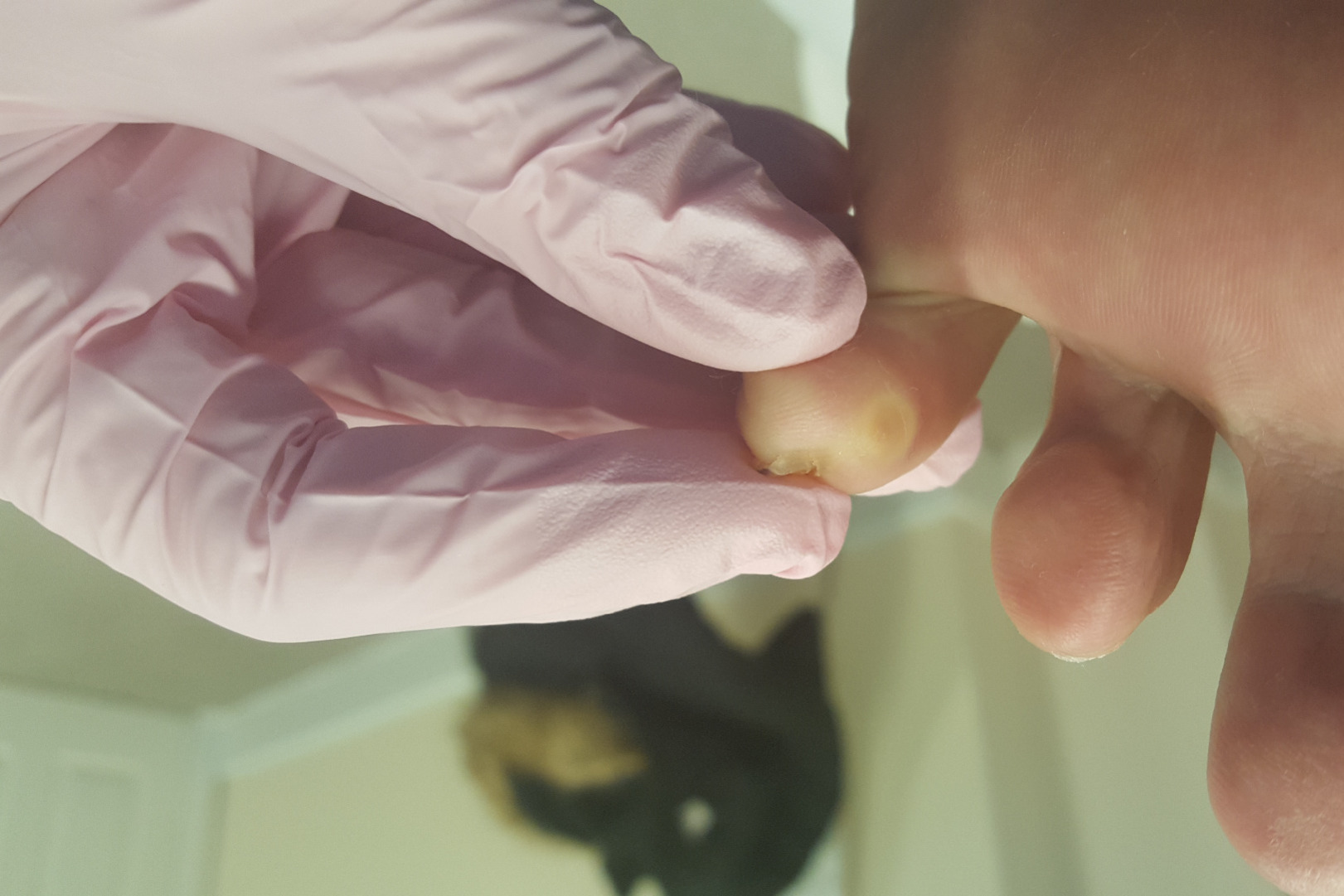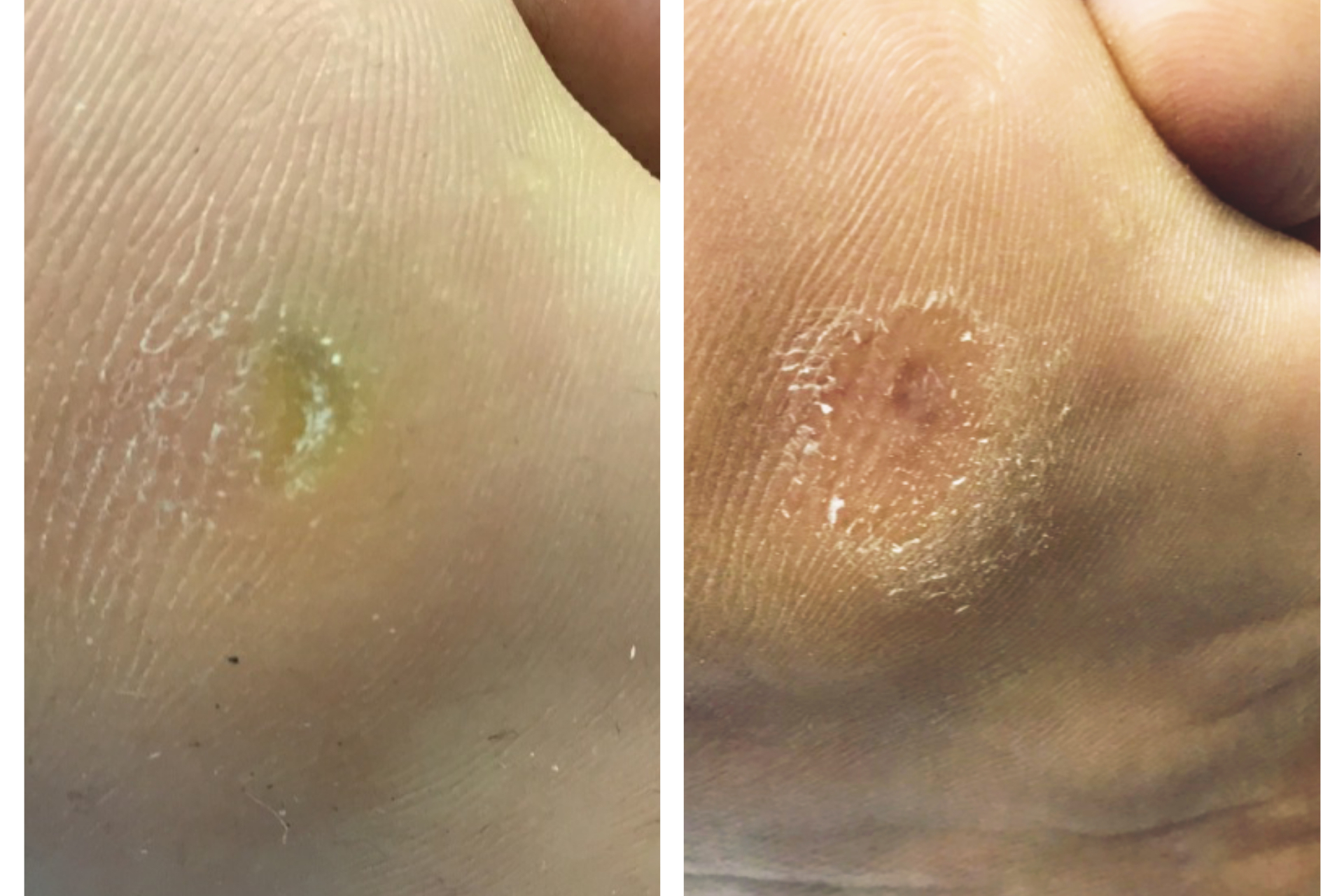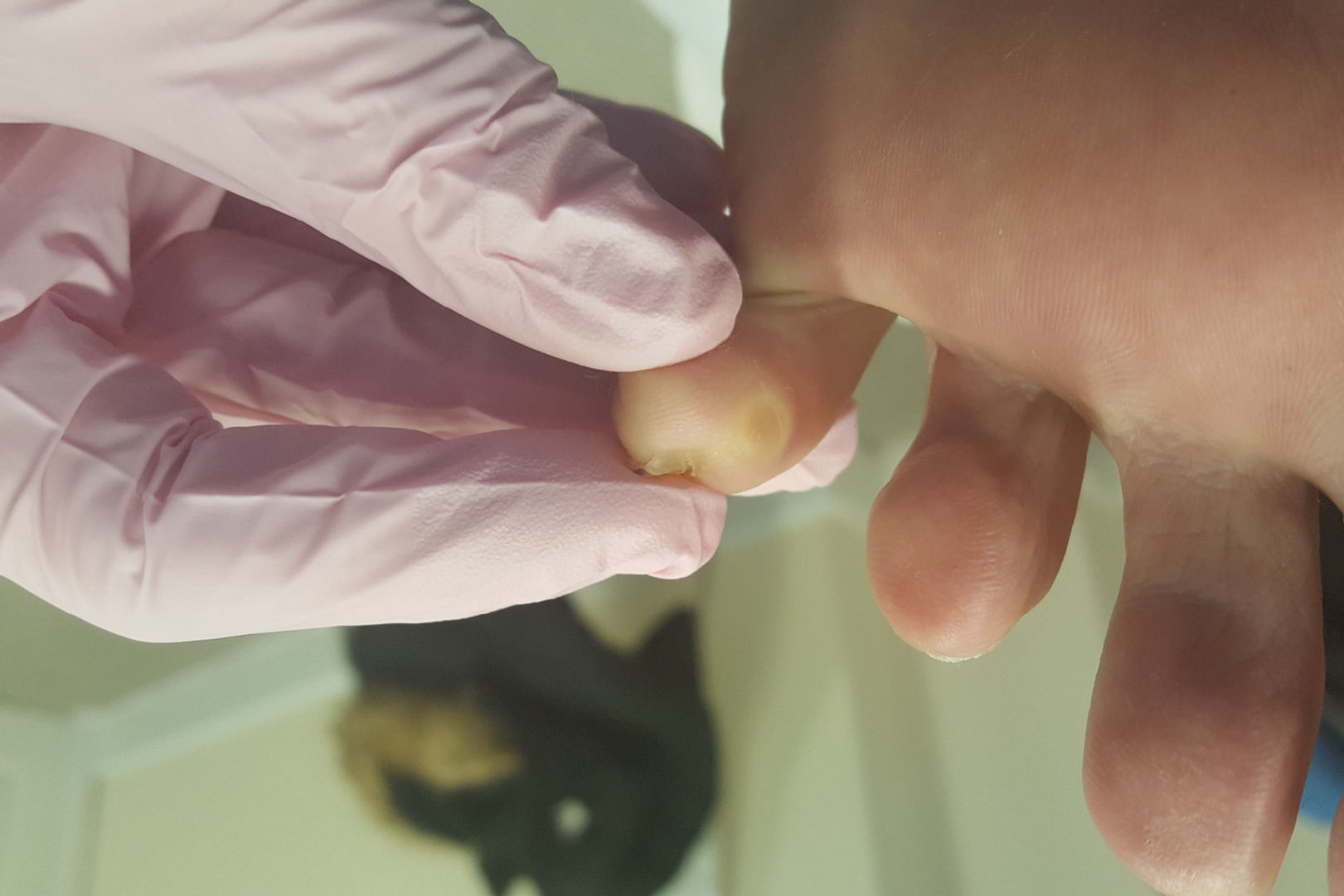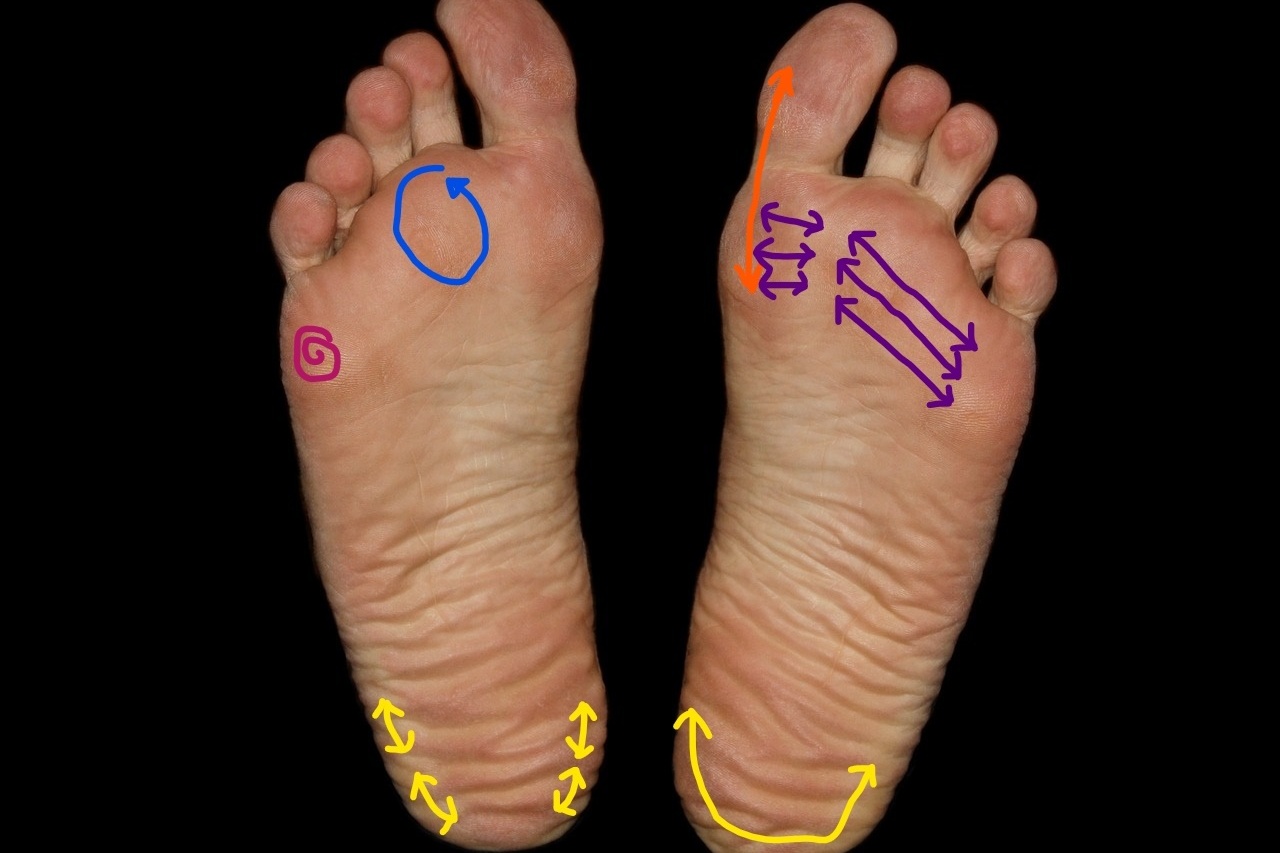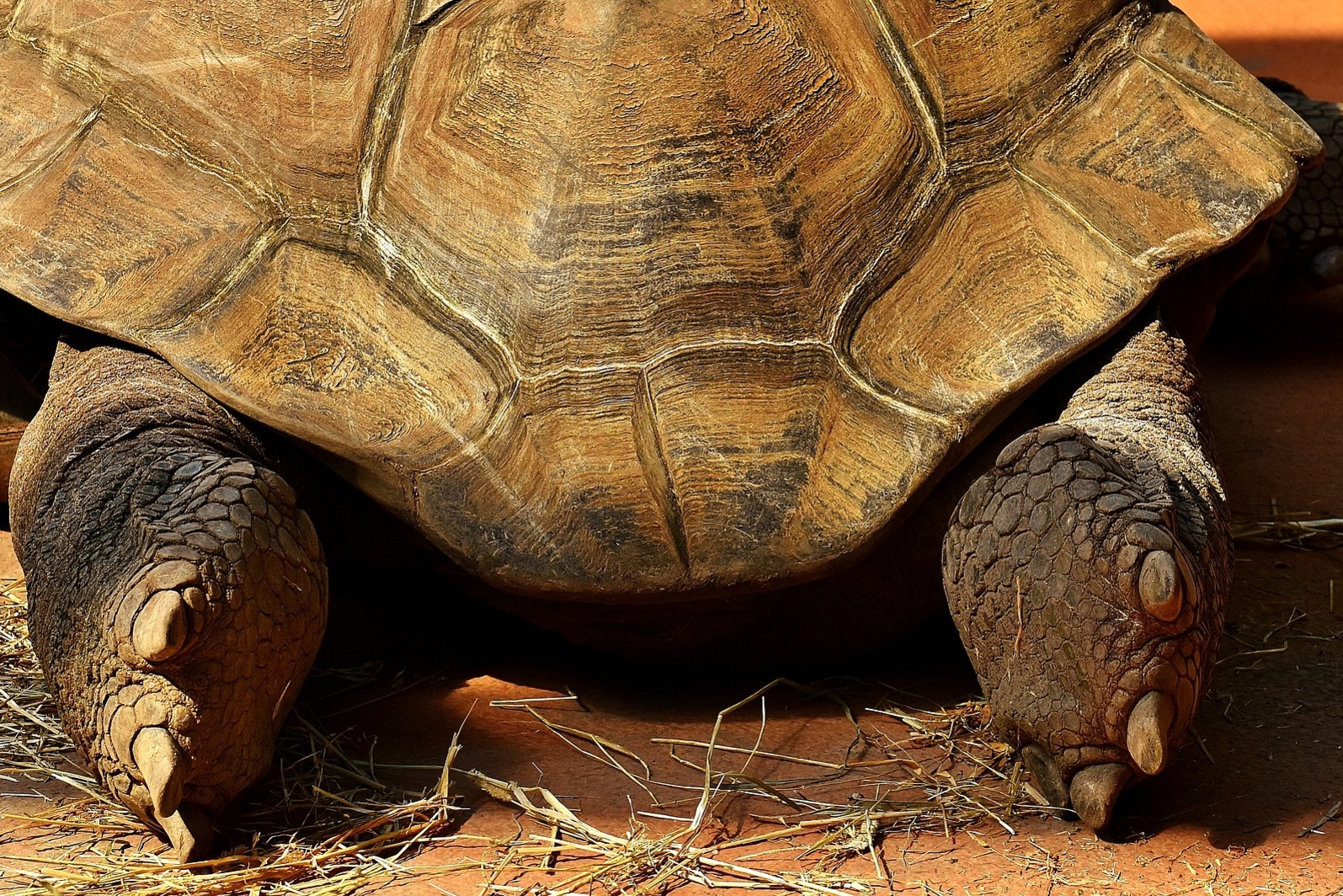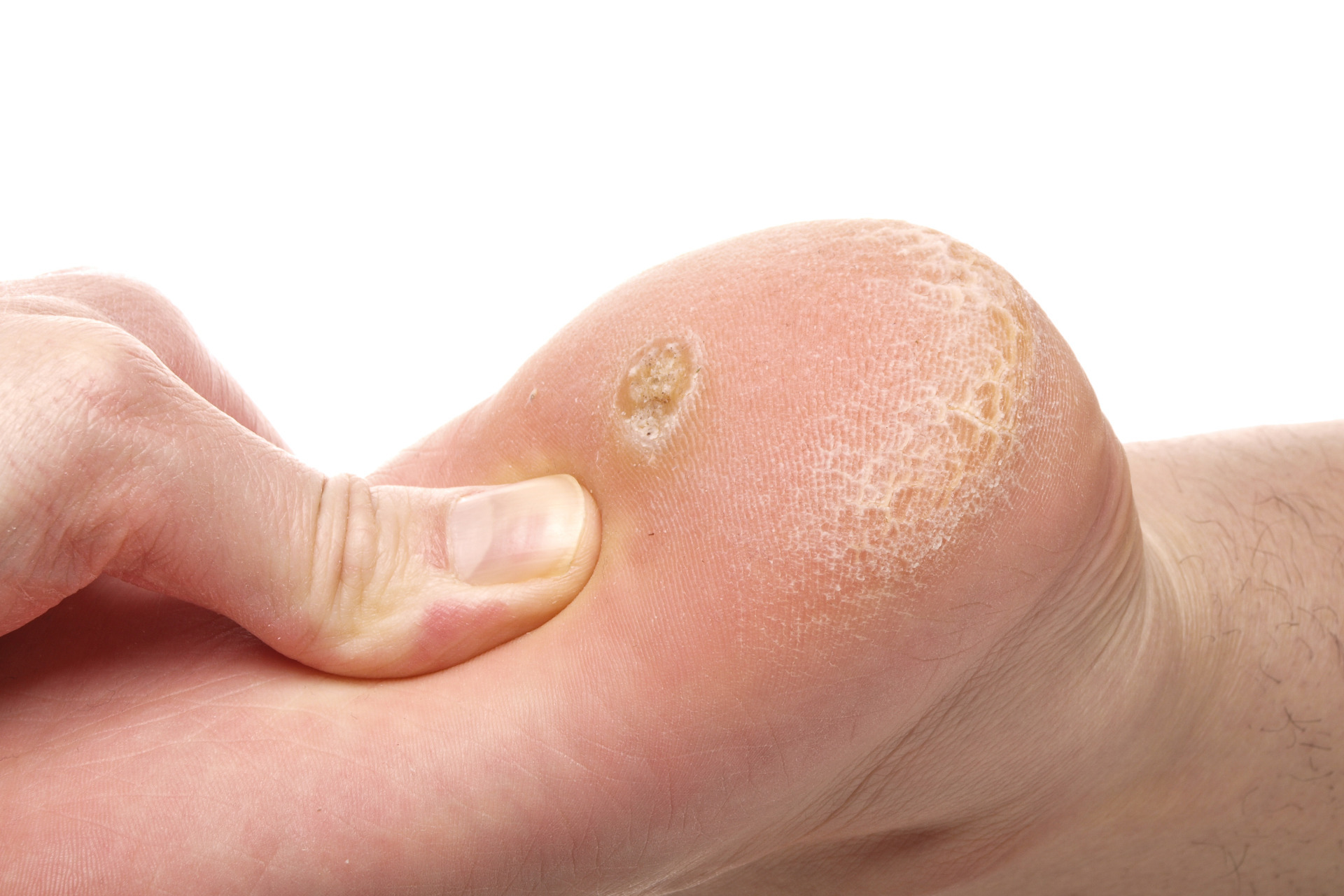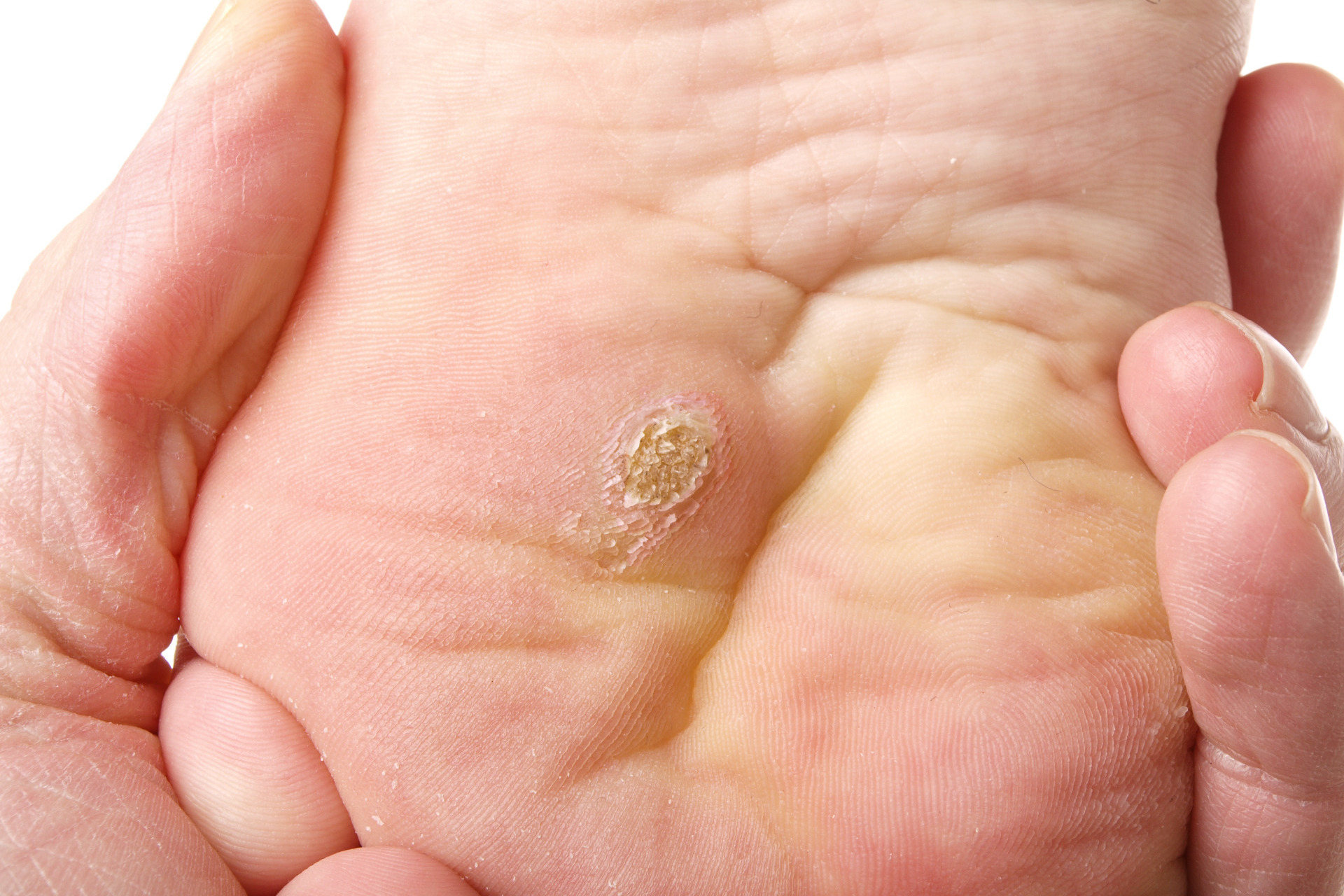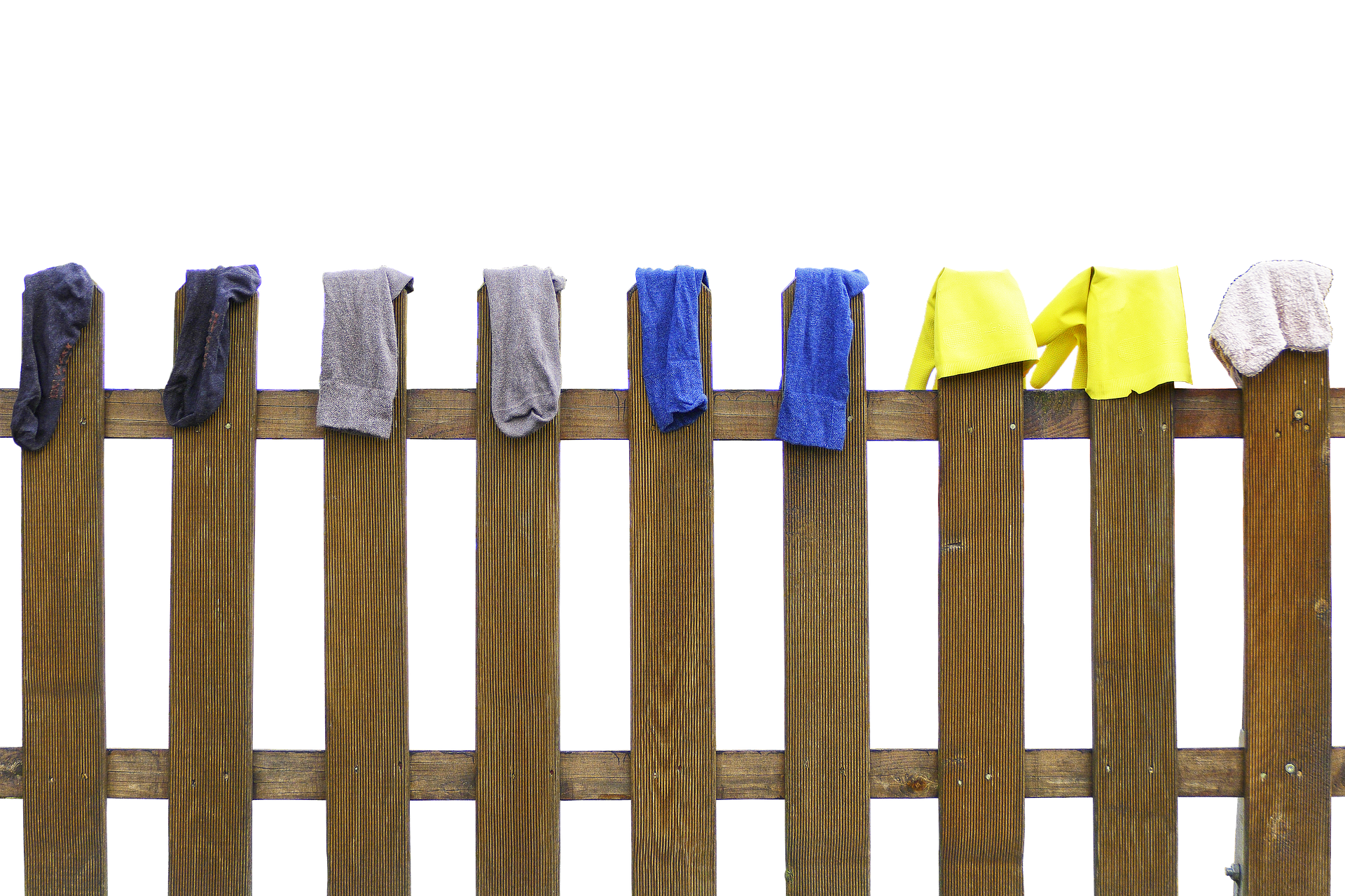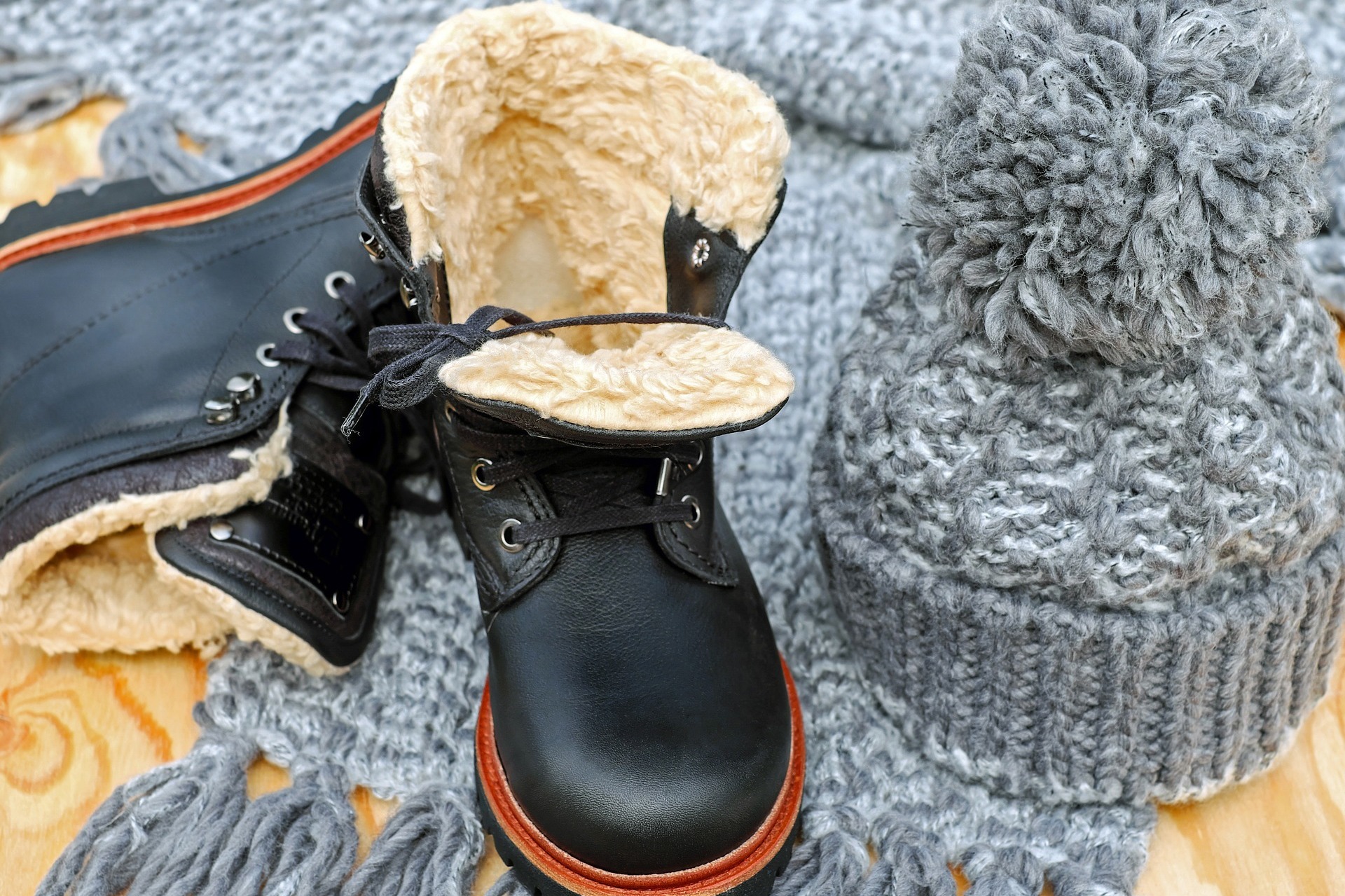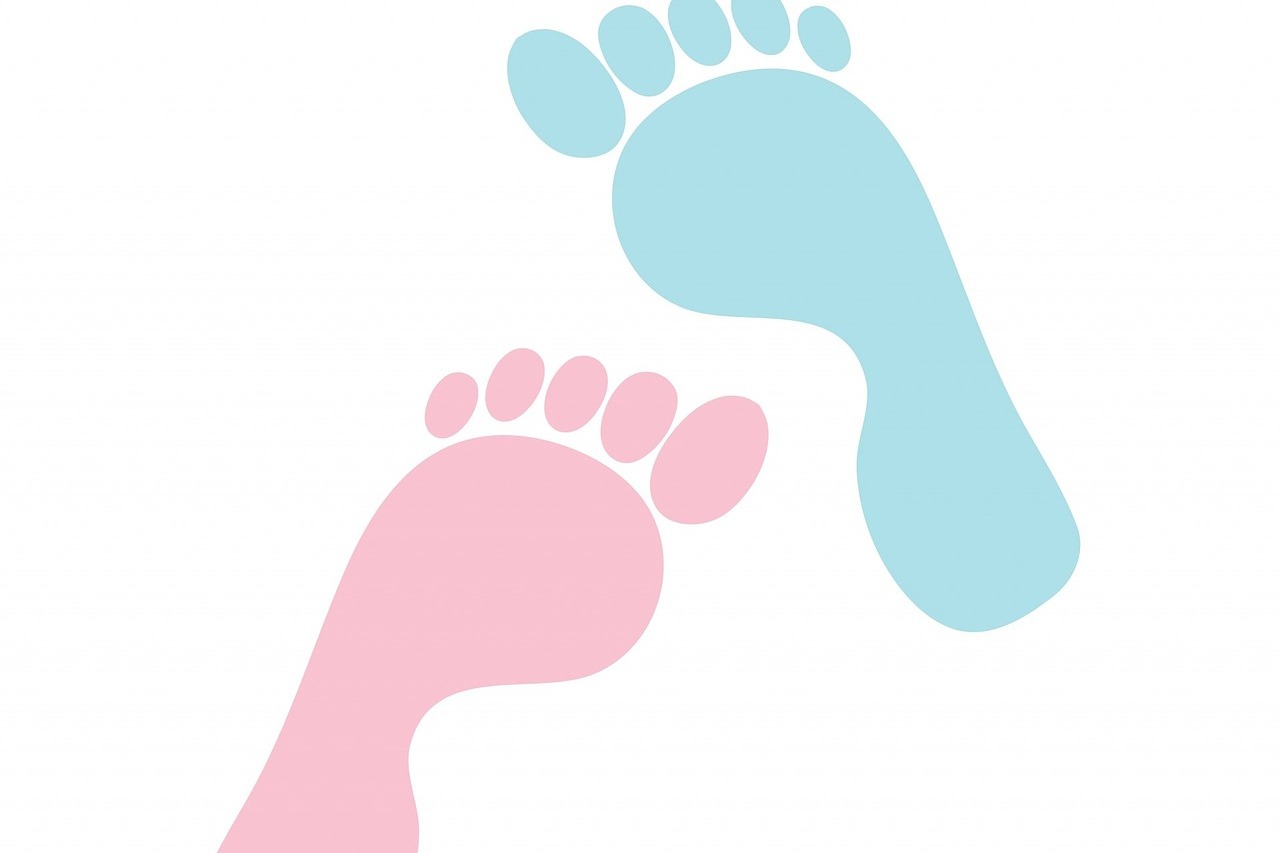CORNS & SKIN PROBLEMS
Corns
A corn is a plug of hard skin that occurs over an area of pressure. They can occur over a toe joint, between the toes or on the sole of the feet. They are hard and round and can get rubbery when wet. The main problem with corns is that they are painful, and this is because the forces or friction that cause a corn increase the pressure on it when you walk. Podiatrists can offer a variety of solution which usually start at enucleating (removing) it. Next, we look at the causes, we can make silicone dividers and props to offload digital corns, and if the corn is on the sole of the foot we can look at methods to off load the area.
At Stride Clinic we offer Dermal Fillers, an injectable, highly viscous Hyaluronic Acid that can withstand foot pressures providing up to 18 months relief. If you haven’t been to us before you will need an Initial Consultation [click here to book] where we will enucleate any corns providing instant relief and discuss long term options.
Callus (Hard Skin)
Callus is hard skin that is caused by friction and it usually occurs over the bonier area of the feet and on the heels. Dry filing the areas twice a week and a daily application of a foot cream containing an active ingredient such as Urea or Salicylic Acid can keep these problem areas under control, but they can become problematic and painful. We debride the dead skin away, smooth it with our files and apply a foot cream to restore your skin to its best. In particularly challenging areas where the build-up occurs quickly, we will discuss the option of a Biomechanical Assessment (more info) to address the mechanical causes of the pressure occurring in these areas. There is also the option of using Dermal Fillers, an injectable, highly viscous Hyaluronic Acid that can withstand foot pressures providing up to 18 months relief. If you haven’t been to us before you will need an Initial Consultation [click here to book] where we will debride callus providing instant relief and discuss long term options.
Cracked Heels
Cracked heels can be painful and if they bleed, they can allow infection in. It can take several sessions of regular debridement and daily application of a heel balm to get them under control, but the relief is worth it. Footwear advice and even biomechanical causes can be addressed to assist in the resolution of cracked heels and if you have a crack that is proving challenging to heel we have a medical grade skin glue which can resolve the issue with one application. If you haven’t been to us before you will need an Initial Consultation [click here to book] where we will treat your heels providing instant relief and discuss long term options.
Verrucae
A verrucae is a virus that affects the epidermal layer of our skin. Viruses are microscopic, what you can see are the distorted skin cells that the verrucae has invaded. There may be small black dots which are capillaries (tiny blood vessels). A verrucae may be a single lesion (plantar wart) which on weight bearing areas can be quite deep and covered with hard skin or grouped together as multiple or mosaic warts (cutaneous warts) which are generally more superficial. We offer two of the most successful treatments at Stride Clinic, Verrutop® and Faulkner’s Needling. If you haven’t been to us before you will need an Initial Consultation [click here to book] where we will discuss the treatment option, most suitable for you and your needs.
Athlete's Foot
Athlete’s foot is a fungal infection of the skin that can lead to intense itching, cracked, blistered or peeling areas of skin, redness and scaling. It can occur on moist, waterlogged skin, usually between the fourth and fifth toes initially, or on dry, flaky skin around the heels or elsewhere on the foot. Large painful fissures can also develop, and the condition can also spread along all five toes and sometimes to the soles of the feet if left untreated. A correct diagnosis is key as other rashes and itchy skin conditions can mimic Athlete’s Foot. If you haven’t been to us before you will need an Initial Consultation [click here to book] where we will discuss the treatment option, most suitable for you and your needs.
Rashes and Itches
Psoriasis, dermatitis and other skin problems can affect the feet in a different way than the rest of the body. Dermatology is part of a Podiatrist’s remit and appropriate treatment relies on a correct diagnosis. If you haven’t been to us before you will need an Initial Consultation [click here to book] where we will discuss the treatment option, most suitable for you and your needs.
Chilblains and Raynaud's
Chilblains are small itchy, red (and sometimes purple) swellings on the skin, which can become increasingly painful, can swell and then dry out leaving cracks in the skin that expose the foot to the risk of infection. They occur on the toes (particularly the smaller ones) and on areas of the feet exposed to pressure, for instance on a bunion or where the second toe is squeezed by tight shoes. Raynaud’s is a spasm of the blood vessels in the extremities associated with cold temperatures it can also be triggered by anxiety or stress. The flow of blood becomes blocked to the toes, fingers, noses, ears and nipples. These areas change colour to white and become painful and then as the blood flow returns the pain sensation develops into pins and needles and the digits go through the colour spectrums blue and then red. With both Chilblains and Raynaud’s managing the symptoms is key and we can help you do this. If you haven’t been to us before you will need an Initial Consultation [click here to book] where we will discuss the treatment option, most suitable for you and your needs.
Products we sell







